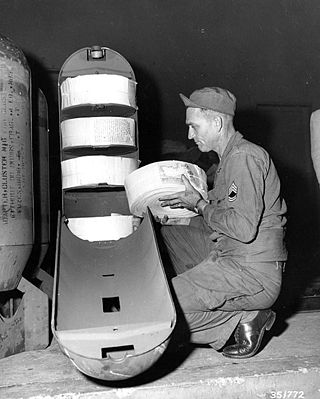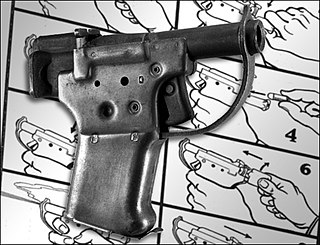
Propaganda is communication that is primarily used to influence or persuade an audience to further an agenda, which may not be objective and may be selectively presenting facts to encourage a particular synthesis or perception, or using loaded language to produce an emotional rather than a rational response to the information that is being presented. Propaganda can be found in a wide variety of different contexts.

Psychological warfare (PSYWAR), or the basic aspects of modern psychological operations (PsyOp), has been known by many other names or terms, including Military Information Support Operations (MISO), Psy Ops, political warfare, "Hearts and Minds", and propaganda. The term is used "to denote any action which is practiced mainly by psychological methods with the aim of evoking a planned psychological reaction in other people".
Black propaganda is a form of propaganda intended to create the impression that it was created by those it is supposed to discredit. Black propaganda contrasts with gray propaganda, which does not identify its source, as well as white propaganda, which does not disguise its origins at all. It is typically used to vilify or embarrass the enemy through misrepresentation.

Gustav Siegfried Eins (GS1) was a British black propaganda radio station during World War II operated by the Political Warfare Executive (PWE). It was the brainchild of Sefton Delmer, a former BBC German service announcer recruited by PWE in 1940, and claimed to be an illegal radio station operating within Nazi Germany. The callsign was based on the German Army phonetic alphabet for the letters GS, but had no meaning.

Soldatensender Calais (G.9) was a British black propaganda broadcaster during the Second World War operated by the Political Warfare Executive. It pretended to be a station of the German military broadcasting network. The station was in operation between 14 November 1943 and 30 April 1945, when it ceased operations.

Denis Sefton Delmer was a British journalist of Australian heritage and propagandist for the British government during the Second World War.

The United States Office of War Information (OWI) was a United States government agency created during World War II. The OWI operated from June 1942 until September 1945. Through radio broadcasts, newspapers, posters, photographs, films and other forms of media, the OWI was the connection between the battlefront and civilian communities. The office also established several overseas branches, which launched a large-scale information and propaganda campaign abroad. From 1942 to 1945, the OWI revised or discarded any film scripts reviewed by them that portrayed the United States in a negative light, including anti-war material.

British Security Co-ordination (BSC) was a covert organisation set up in New York City by the British Secret Intelligence Service (MI6) in May 1940 upon the authorisation of the Prime Minister, Winston Churchill.

Airborne leaflet propaganda is a form of psychological warfare in which leaflets (flyers) are scattered in the air.
Radio 1212 or Sender 11212 or Nachtsender 1212 was a black propaganda radio station operated from 1944 to 1945 by the Psychological Warfare Branch of the US Office of War Information (OWI) under the direction of CBS radio chief William S. Paley, who was based in London. Nachtsender 1212 broadcast from the Grand Duchy of Luxembourg using the former commercial radio facilities known as Radio Luxembourg, which had been occupied and then liberated from German control during World War II.

The Psychological Warfare Division of Supreme Headquarters Allied Expeditionary Force was a joint Anglo-American organization set-up in World War II tasked with conducting (predominantly) white tactical psychological warfare against German troops and recently liberated countries in Northwest Europe, during and after D-Day. It was headed by US Brigadier-General Robert A. McClure. The Division was formed from staff of the US Office of War Information (OWI) and Office of Strategic Services (OSS) and the British Political Warfare Executive (PWE).

Psychological operations (PSYOP) are operations to convey selected information and indicators to audiences to influence their motives and objective reasoning, and ultimately the behavior of governments, organizations, groups, and large foreign powers.
The Information Control Division (ICD) was a department of the Office of Military Government, United States (OMGUS) during the early part of the post-war American occupation of Germany following World War II focused on controlling and altering German media to promote democratic values and to move Germany away from Nazism. Formed on 12 May 1945 from the Psychological Warfare Division of SHAEF (PWD/SHAEF), the ICD was led by Robert A. McClure, with a mission defined as:
to provide the Germans with information, which will influence them to understand and accept the United States programme of occupation, and to establish for themselves a stable, peaceful, and acceptable government. Such information will impress upon the Germans the totality of their military defeat, the impossibility of rearmament, the responsibility of the individual German for war and atrocities, the disastrous effects of the structure and system of National Socialism on Germany and the world, and the possibility that through work and cooperation Germany may again be accepted into the family of nations.
The Far Eastern Liaison Office (FELO) was a Second World War Propaganda and Field Intelligence unit set up under the orders of the Allied Land Commander, General Sir Thomas Blamey, on 19 June 1942. FELO became one of four sections of the Allied Intelligence Bureau (AIB) which was established on 6 July 1942 to control and co-ordinate the activities of various intelligence organisations that had been set up after the outbreak of war with Japan.
National governments deal in both intelligence and military special operations functions that either should be completely secret, or simply cannot be linked to the sponsor. It is a continuing and unsolved question for governments whether clandestine intelligence collection and covert action should be under the same agency. The arguments for doing so include having centralized functions for monitoring covert action and clandestine HUMINT and making sure they do not conflict, as well as avoiding duplication in common services such as cover identity support, counterespionage, and secret communications. The arguments against doing so suggest that the management of the two activities takes a quite different mindset and skills, in part because clandestine collection almost always is on a slower timeline than covert action.

Operation N was a complex of sabotage, subversion and black-propaganda activities carried out by the Polish resistance against Nazi German occupation forces during World War II, from April 1941 to April 1944. These activities were organized by Office N, which in October 1941 was transformed into an Autonomous Sub-Department N of the Bureau of Information and Propaganda of the Armed Resistance, later of the Home Army. It was headed by Tadeusz Żenczykowski.
Morale Operations was a branch of the Office of Strategic Services during World War II. It utilized psychological warfare, particularly propaganda, to produce specific psychological reactions in both the general population and military forces of the Axis powers in support of larger Allied political and military objectives.

Operation Periwig was a secret service operation planned and carried out by the British Special Operations Executive (SOE) from November 1944 onwards during the Second World War. The aim was to disrupt the Nazi regime by feigning resistance movements within the German territory.

Operation Braddock was a secret service measure planned and carried out by the British Special Operations Executive (SOE) from 1943 onwards during the Second World War. The aim was to create confusion, fears, insecurity and demoralisation in enemy territory by dropping so-called "attack packages". The dropped packages were to contain special grenades, pocket flares, a small firearm or incendiary devices. Subversive forces, prisoners of war or forced labourers, equipped with these and operating in the enemy territory, should then carry out attacks that become a significant threat to the enemy.

Propaganda in World War II had the goals of influencing morale, indoctrinating soldiers and military personnel, and influencing civilians of enemy countries.












